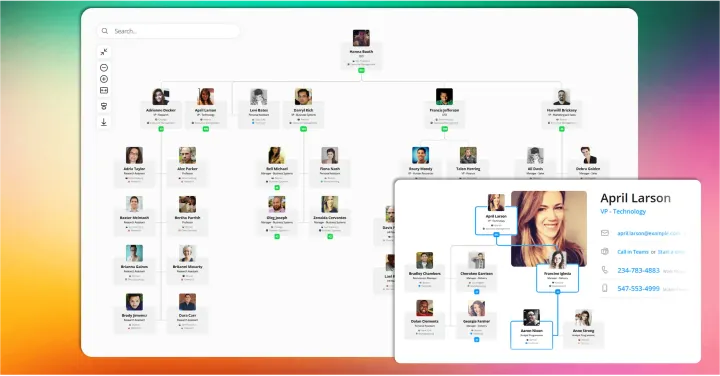A Deep Dive into Roles and Responsibilities
The difference between roles and responsibilities is more than you think. This article takes a deep dive into the world of roles and responsibilities.

Have you ever found yourself at work, staring at a to-do list that seems to have been drafted by a committee of ambitious octopuses? Each tentacle scribbles down a task, each one more unrelated to the last.
It's a common scene, and it's not just because octopuses are notoriously poor at HR management. It's because there's a fundamental confusion between roles and responsibilities.
So, what is the difference between roles and responsibilities in an organization? On the surface they may seem similar - just interchangeable terms for who does what jobs - but when you dive deeper into each one, critical differences emerge.
Understanding those differences is key to building an effective and collaborative team. Let's dive in.
What Exactly Are Roles and Responsibilities?
First, some quick definitions:
What are Roles?
Roles refer to a position and broad set of duties within an organization - think job titles like Manager, Designer, Developer.
What are Responsibilities?
Responsibilities outline the specific day-to-day tasks and expectations tied to each of those roles. On their own, they seem pretty straightforward. But bringing them together in real workplace scenarios gets tricky fast.
Where Things Get Fuzzy
The overlap between roles and responsibilities is where things get muddy.
For example, design tasks might fall under the Designer role, but what if developers need to tweak UI on occasion? Do all client communications go to the Account Manager or should the Design Lead step in sometimes? Without clear boundaries, gaps and overlaps emerge. This confusion leads to friction on projects.
"I thought that was your job!"
"But I'm too busy already, I can't take that on!"
Sound familiar?
So, What is the Difference Between Roles and Responsibilities?
While roles and responsibilities may seem similar at first glance, there are some major differences between the two when it comes to how they function within an organization:
Roles
- Broad categories that group similar jobs and functions
- The focus is on the position and its overall purpose
- Tend to be relatively static - they change as the business evolves over longer periods
Examples: Marketing Manager, Software Developer, Customer Support Rep
Responsibilities
- The specific activities owned by an individual role
- The focus is on the day-to-day work and deliverables
- Tend to be more dynamic - they can change quarterly or annually
Examples: Managing email campaigns, coding features, answering customer tickets
Put another way...
Roles = WHO you are
Responsibilities = WHAT you do
With this breakdown, you can see that while related, these organizational definitions serve different purposes. Roles act as the higher-level framing of positions. Responsibilities outline what gets done within those frames.
Why Defining Roles and Responsibilities Matters
Beyond just clearing up day-to-day confusion, there are 3 major benefits to clearly defined roles and responsibilities:
- Improves collaboration: With explicit responsibilities for each team member, it's easier to hand off tasks, offer help, and reduce duplicated efforts.
- Aligns with business goals: Roles should map closely to overarching goals and departmental needs. This ensures effort stays focused.
- Enables growth: Documentation provides a framework for employees to understand what is expected in their current role and what is needed to progress toward new roles.
Crafting Clear Role and Responsibility Definitions
So how do you go about creating these definitions? Here is a step-by-step process:
Step 1: Identify Main Roles
Group similar jobs and titles that emerge at your organization. Common buckets are:
- Leadership
- Technical
- Creative
- Sales and Marketing
- Operations
Step 2: Outline High-Level Responsibilities
For each role, describe 3-5 key areas of ownership. Resist getting into task-level detail here.
For example: Developer Role
- Coding and debugging applications
- Advising on technical limitations and solutions
- Improving system architecture
Step 3: Get Specific
Now drill down to specific tasks and expectations - both day-to-day and over longer periods like quarterly or annually. Also, indicate what tasks are shared across roles.
For example: Developer Responsibilities
Daily
- Write, update, and maintain code for front and back-end systems
- Perform code testing and debugging
- Assist designers with technical considerations on visual elements
Quarterly
- Recommend improvements to development pipelines
- Identify new technologies for possible implementation
Shared
- Participate in sprint planning and retrospectives
- Contribute code to review of other developers
Step 4: Review and Revise
Don't let your roles and responsibilities documentation sit static. Set reminders to revisit it quarterly and make updates to reflect new goals, tools, and processes.
Roles and Responsibilities Enable Organizational Planning
Defining clear roles and responsibilities isn't just about day-to-day execution - it also enables valuable organizational design and planning.
Here are some of the key ways it contributes:
Maps Current Capabilities
The act of outlining roles and responsibilities helps leadership understand the organization's current capabilities and gaps. This allows more accurate planning.
"Do we have the skills needed to execute our major initiatives this year?"
"Do we need to hire for certain roles?"
Questions like this can be answered more easily with roles and responsibilities spelled out.
Budgets and Forecasts More Accurately
With visibility into current team bandwidth, it's easier for leadership to budget for new hires as the organization grows. Responsibilities documentation also improves annual performance forecasting.
Enables Growth Planning
Well-defined responsibilities act as a framework for managers to identify employee growth opportunities. By outlining what is expected in each role, planning career advancement becomes more structured. Employees also benefit from seeing a clearer path forward.
Succession Planning
Finally, explicit responsibilities allow leadership to assess candidates for succession planning. With concrete criteria of what is expected, decisions around promotions and new assignments can be more merit-based.
In all these ways, keeping roles and responsibilities current improves organizational planning and decision-making. As goals and initiatives shift, so too should these key definitions.
Now Get Defining!
With a clear understanding of the critical differences between roles and responsibilities - and a process to create your definitions - you're ready to reduce friction on your team.
Collaboration, alignment, and growth all start here.


